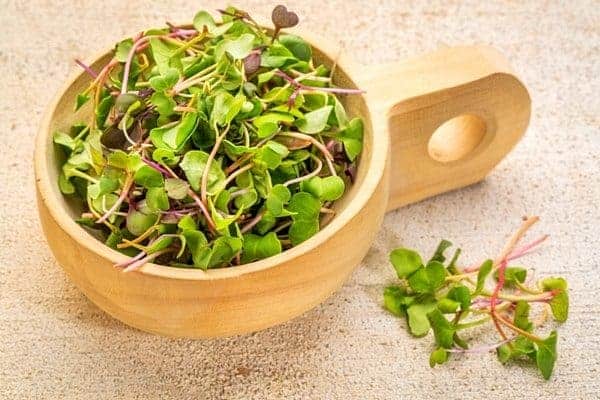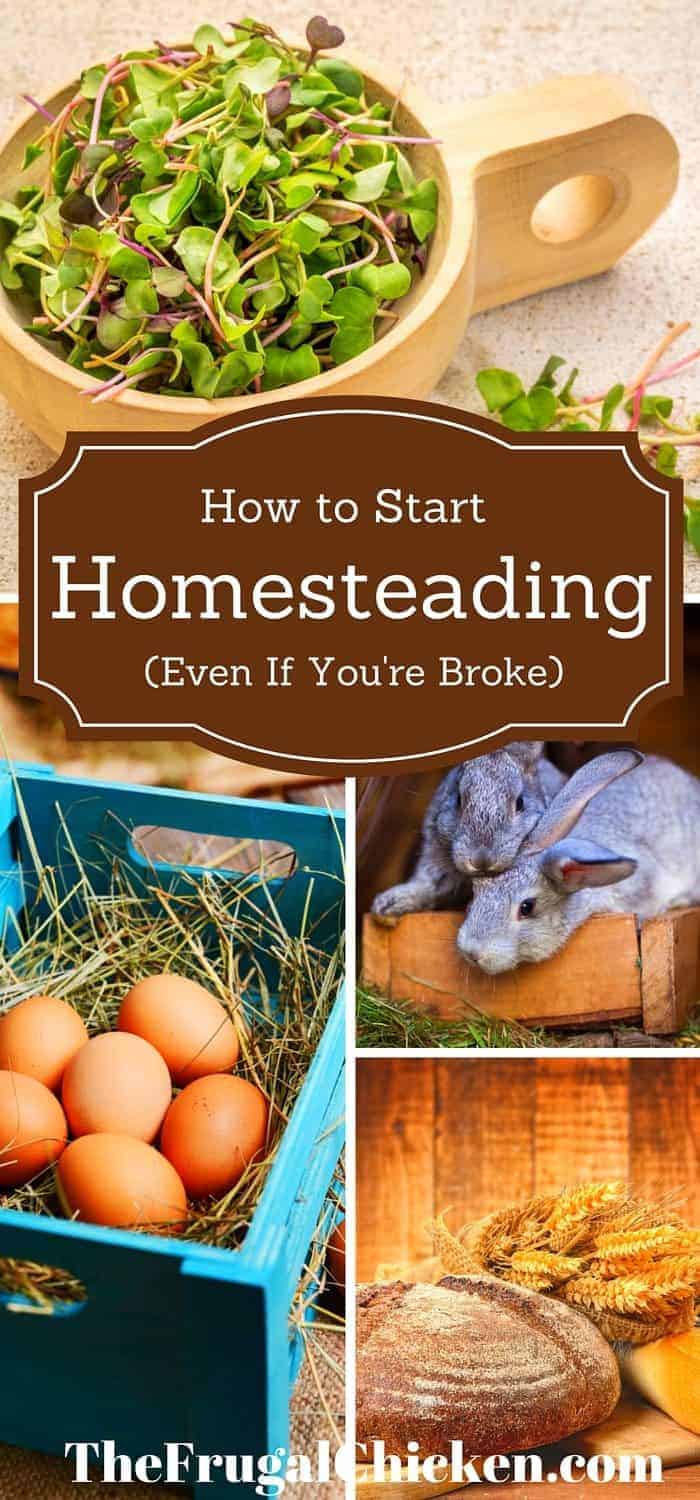Similarly, rabbits require little space. I’ve seen rabbits kept in individual cages in a garage, and with a couple tweaks, you can stack and/or hang the cages to maximize your vertical space.
Breeding your livestock
Another way to start homesteading today is to breed your livestock for a sustainable source of meat.
Rabbits are easy breeders, with a 31 day gestation cycle. They mature in as little as 6 months.
They can have both large and small litters, and the size of the litter depends on the individual rabbit and the breed. We’ve had litters with as few as 3 and as many as 10 baby rabbits.
If one of your homesteading goals is to eat rabbit twice per month, then you will need 24 rabbits on that you can harvest.
If your goal is to eat chicken once per week, you will need 52 meat chickens to harvest and you can hatch eggs at home to reduce your costs.
Similarly, for continual eggs, you can hatch laying breeds at home to expand your flock for free (or only spending pennies on electricity.)
I’ve also found that by making a few simple but important tweaks to your feeding regime, you can feed your chickens for much less when you start homesteading.
READ NEXT: HOW TO SAVE MEGA DOLLARS FEEDING YOUR CHICKENS
If you have space in your garden, by growing as much food for your livestock as possible, you can save a ton of money to start homesteading today.
Wheat, for example, is the basis of most livestock diets, and you can easily grow a lot on a very small space.
Foraging is another option, particularly for rabbits. In addition to a good feed, by offering greens, you can save a ton of money.
You can also let your rabbits graze your garden between seasons to save on feed costs. Stay away from tomato leaves, however.
Learning traditional skills
One of the simplest ways to start homesteading today is to learn traditional skills, such as baking bread and canning.
I’ve personally derived a lot of satisfaction from improving my bread making skills, and I love knowing that no matter what, as long as I have water, salt, and flour, I can make wonderful breads.
Next on my homesteading journey, is to improve my sourdough skills.
Canning is another skill you can learn to start homesteading today. Even if there are certain foods you need to purchase at the store (like beans) then buying in bulk and canning will not just save you money, but is usually healthier.
Here’s 40 traditional skills you can learn by video to start homesteading today.
I’ve started to learn about preserving meat and love making my own sausage (which also saves a ton of money). This is something anyone, anywhere can do with just a meat grinder and a few simple tools.
Starting a garden
For a lot of people, learning how to start homesteading from scratch goes hand in hand with gardening.
If you have a patch of land to start growing fruits and vegetables, then you’re well on your way to start homesteading today.
Only grow what you like
If you dream of growing your own vegetables, my first piece of advice to start homesteading today is to grow only what you’ll eat.
Your first couple years, growing only a few types of vegetables will make it easier, and you’ll have a better experience.
My first year gardening, I grew way too much. Now, I’ve scaled it down to tomatoes, beans, peas, and squash.
If you want to start making food from scratch, then tomatoes are a good place to start.
They’re the basis of many things you can make from scratch, such as pasta sauce, salsa, tomato paste, and soups.
Beans, which are full of protein, are another vegetable (legume, actually) that are good to grow since they’re so versatile.
Of course, your list might differ from mine, and you can do anything you like as you progress with homesteading.
Bean sprouts
Another option with beans is to sprout them, which increases the amount of nutrients you’ll get from them and makes them easier to digest.
To sprout beans, simple place them in a mason jar and dampen them with water.
Another option is to sprout them in a plastic container that can drain in order to reduce the chance of mold – mist them with water often to clear away any potential for mold to grow.
You can then use them in salads, on sandwiches, etc.
Growing wheat & sprouting grains for bread
If you’re interested in growing wheat to try to start homesteading today, you can do so in area as small as 20 feet by 50 feet.
In that tiny of an area, you can grow enough wheat to last you for a year.
You can then use your wheat berries to make your own flour. One option is to sprout the wheat seeds before grinding.
Using sprouted wheat to make bread increases the nutrients you’ll consume, and makes for a healthier bread.
READ NEXT: HOW TO GROW FODDER FOR YOUR CHICKENS
Micro Greens
If you want to grow leafy greens, but don’t have a lot of space or want to try something different, then growing micro greens might be for you.
You can grow a lot of these vegetables in a small space, in dirt or in some other substrate.
You only let the seeds sprout for a few days before harvesting, but they’re full of nutrients, and you harvest the leaves when they’re at their sweetest, most flavorful, and tender.
If you want to start homesteading today, there’s many ways to begin. Figure out which parts of homesteading are most attractive to you, and start there. You can always add extra skills later.
I’d like to hear from you!
Do you want to start homesteading today? Which parts are most attractive to you? Where do you struggle? Email me at editor@thefrugalchicken.com or comment below!


